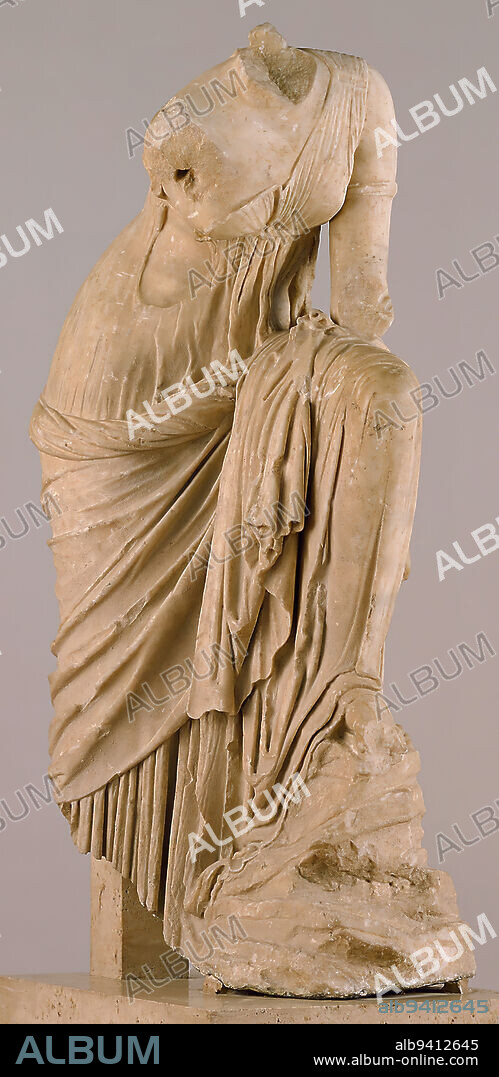alb9412645
The Tiber Muse, 2nd-1st century BCE, 47 x 13 x 24 in. (119.38 x 33.02 x 60.96 cm), Marble, Italy, 2nd-1st century BCE, Although discovered in the vicinity of the Tiber river in Rome in 1885, the style of this statue's drapery suggests that it originated in a workshop in Greece or Asia Minor. The Roman importation and copying of Greek sculpture are well documented, from the time of the Roman conquests of Greeks territories in the third century B.C. and throughout the imperial era (27 B.C.-about 395 A.D.). The public exhibition of Greek spoils encouraged Romans to collect Greek art and commission new works in similar styles. Displaying statuary of Greek origin or appearance eventually became a mark of one's social status and education.

|
Ajouter à une autre Lightbox |
|
Ajouter à une autre Lightbox |



Avez-vous déjà un compte? S'identifier
Vous n'avez pas de compte ? S'inscrire
Acheter cette image

Légende:
Voir la traduction automatique
The Tiber Muse, 2nd-1st century BCE, 47 x 13 x 24 in. (119.38 x 33.02 x 60.96 cm), Marble, Italy, 2nd-1st century BCE, Although discovered in the vicinity of the Tiber river in Rome in 1885, the style of this statue's drapery suggests that it originated in a workshop in Greece or Asia Minor. The Roman importation and copying of Greek sculpture are well documented, from the time of the Roman conquests of Greeks territories in the third century B.C. and throughout the imperial era (27 B.C.-about 395 A.D.). The public exhibition of Greek spoils encouraged Romans to collect Greek art and commission new works in similar styles. Displaying statuary of Greek origin or appearance eventually became a mark of one's social status and education.
Crédit:
Album / quintlox
Autorisations:
Modèle: Non - Propriété: Non
Questions sur les droits?
Questions sur les droits?
Taille de l'image:
1778 x 3648 px | 18.6 MB
Taille d'impression:
15.1 x 30.9 cm | 5.9 x 12.2 in (300 dpi)
Mots clés:
ATELIER • COPIER • COURS • CULTURE • ÉCOLES • EDUCATION ECOLE • EDUCATION • ÉDUQUER • ENSEIGNANT • ENSEIGNEMENT • FORMATION • GRECE • INSTITUTEURS • INSTRUCTION (ENSEIGNEMENT) • INSTRUCTION • ITALIE • MAITRES ECOLE • MARBRE • MARK • MARQUE • MOÎLLE • PEDAGOGIE • PIERRE MARBRE • PROFESSEUR • ROME • STYLE • TEMPS • TIBER
 Pinterest
Pinterest Twitter
Twitter Facebook
Facebook Copier le lien
Copier le lien Email
Email
